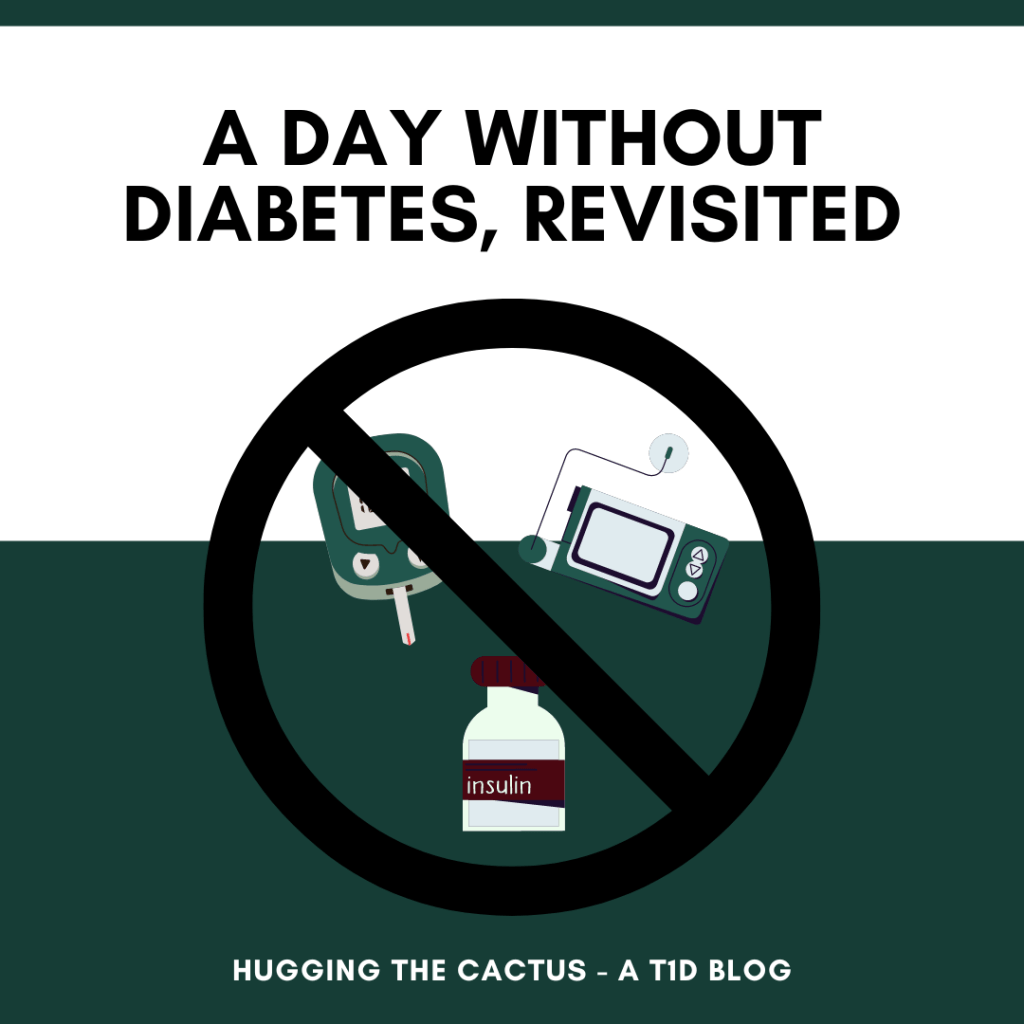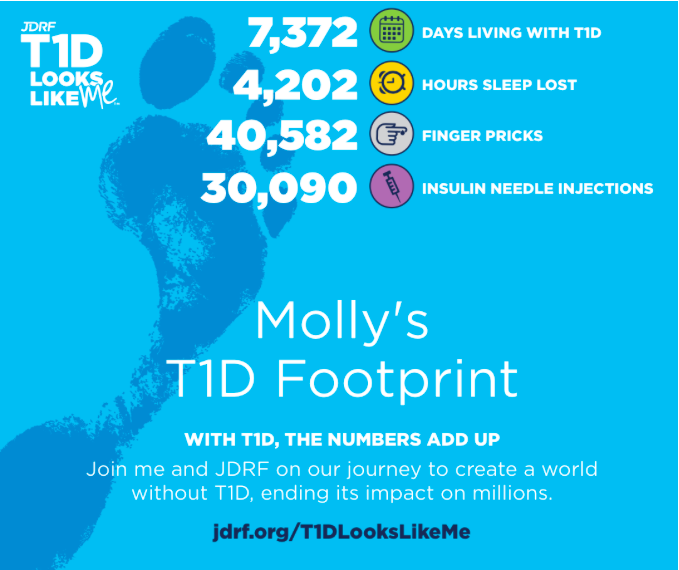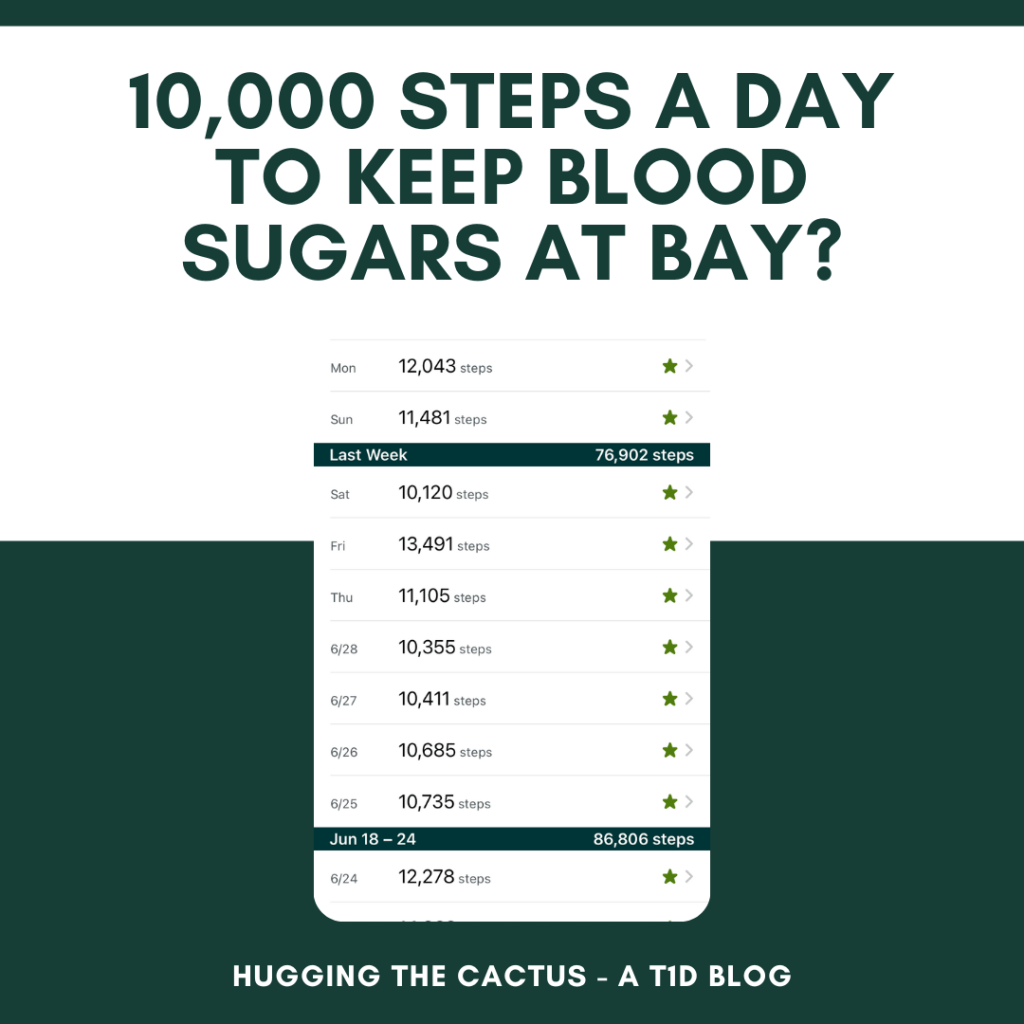A day without diabetes…it’ll happen, one day. Who knows when. But until that happy time, it’s fun to think about what a day without diabetes would look like for me. Originally, I dreamed up a diabetes-free day 5 years ago (which you can read about here); while what I wrote then is still pretty much 100% true for me now, I think it’s more enjoyable to think about the bigger picture rather than get into the nitty-gritty details – though I definitely wouldn’t say no to any of the specifications I got into my previous post!
What does the bigger picture look like? In a word, bliss. In a list, something like this:
- Eat whatever the hell I want without repercussions
- Exercise in any form without my blood sugar levels stopping me
- Enjoy the silence created by no beeping or alarming devices
- Embrace a device-free body
- Evade needles of all shapes and sizes, excess medications, and tiny blood droplets that won’t stain my clothing because they aren’t there
- Experience peace of mind in knowing that my decisions for the day would not be sway in any form by diabetes

I think it’s that last bullet point that resonates with me more than any of the others – “experience peace of mind”. While I can certainly attain that even while actively managing my diabetes, it’s not quite the same because there’s always a part of me, even if it’s tinier than a speck of dust, that will worry about diabetes. I can’t ever seem to get rid of it. But I could if I were to ever experience a day without diabetes.
That’s why I remain hopeful, if not naively optimistic, that I’ll get to experience one – and many others, to boot, if I want to get really enthusiastic about it – in my lifetime.









